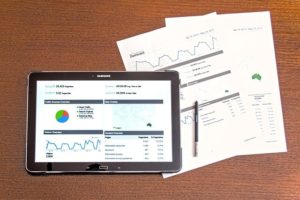While an “e-commerce ecosystem” might not be a common term, it’s an important one.
At the heart of a successful e-commerce business is the customer.
The ecosystem you build makes the difference between a positive user experience (and a happy, likely repeat customer) and lost revenue.
By the end of this guide, you will understand what an e-commerce ecosystem looks like, why it’s essential that you build a seamless one, and how to build one.
What Is an E-Commerce Ecosystem?
An e-commerce ecosystem works just like any other ecosystem — it’s just entirely online.
Anytime you go to Amazon to make a purchase, or even to grocery shop online, you’re engaging with an e-commerce ecosystem.
It’s essentially the platform that you log onto to make an online purchase via a group of systems that work together to electronically provide you with that good.
What Should an E-Commerce Ecosystem Look Like?
Think about your ideal, or target, consumer; their end experience with your company or platform will be defined entirely by the e-commerce ecosystem that you build.
Their experience with your …
- Website
- Marketing activities
- Backend technology stack
- Warehouse and inventory management
- Shipping processes; and even
- Customer service
… will contribute to their overall idea and opinion of your company.
The Ecosystem Should Be Direct-to-Consumer
The flow from one step of the sales funnel to the next must be seamless, so that a customer can easily navigate to make a purchase across all devices.
An easy, simple, and therefore positive, user experience is the result of your e-commerce ecosystem operating as one.
Any …
- Gap
- Lack of communication; or
- Misalignment in your ecosystem
… presents an opportunity for lost revenue and lost customers.
The Ecosystem Should Be Molded Around the Buyer’s Journey
Your goal is to create a seamless, and pain-free experience for potential customers as they make their way through a sale.
Walk through your potential buyer’s journey with them and learn what steps you can take to make your e-commerce ecosystem that much more efficient:
1. Generate demand via new visitor sessions, returning visitor sessions, and impressions.
2. Marketing and product teams take the lead to more consistently target your buyers with strategies like Facebook/Instagram ads, organic traffic, or referral traffic.
3. Now that you’ve gotten a buyer to your website, it’s time to coax them into a sale by increasing …
- Time on page
- Pageviews per session
- Pageviews
- Average session duration
- Email list growth rate; and
- Social shares
… while focusing on decreasing site bounce rates.
4. It’s time to employ your remarketing strategy. Stay consistent and top of mind for potential customers; this is an often-overlooked, but essential step in the buyer’s journey that should be a central part of your e-commerce ecosystem.
5. It’s game time — your customer is ready to buy. Reinforce your product’s value and make it clear that there is no other option but to buy your product. Utilize automatic abandoned cart and abandoned checkout remarketing strategies if a purchase is not made.
6. Go beyond the typical order confirmation, order shipped with tracking, and delivery confirmation emails. Making another connection once the product is received. For example: Follow up that there was no trouble with shipping or the product that that, the product arrived as expected, etc. By cultivating a personal experience for the buyer, you are demonstrating a next-level commitment to your customer’s satisfaction.
By weaving all steps of the buyer’s journey together, you’re creating a smooth sales funnel and sustainable e-commerce ecosystem that will allow you to increase revenue and retain customers.
Inspire and Engage
At Pretty-Impressive, each client is unique. Which is why we create strategies tailored to the needs of each company. Reach out and we’ll help you get your brand exactly where it needs to be — ahead of the rest.
5 Steps to Navigating the Components of Your E-Commerce Ecosystem
While it may seem complicated, combining your e-commerce platforms will provide as close to seamless orders and deliveries as possible, which is essential to a successful e-commerce business.
Put yourself in your customer’s shoes or maybe this has even happened to you as a consumer:
You’re going to check out with a discount code that was advertised on the store’s homepage. As soon as you type in your 15% off code, though, you’re greeted with an error message.
This negative impact immediately shakes your confidence and likely leaves you questioning if your purchase is worth the hassle. Aka — lost revenue.
A strong e-commerce ecosystem ensures that all steps and platforms operate smoothly from the time a user visits the website to when payment is received, the order is verified, shipped and ultimately, delivered.
1. Map Out Your Platform’s Design
Sometimes, you have to go back to the basics.
Start with a flowchart that maps out all steps in the buyer’s journey and what platforms they interact with. This visualization exercise will highlight any areas that are lacking and help promote smooth transactions.
Sure, it might seem redundant, but putting yourself in your customer’s shoes will help you understand any gaps and mitigate the chances of lost revenue.
Next, put it to the test. Simulate a shopping experience and make your way through your e-commerce website as if you were a potential customer — from site entry to purchase and checkout.
Knowing each sequential process is essential to understanding what goes smoothly for the shopper and what might not.
2. Look For Ways To Improve Your Connection Process
It might be that the whole of your e-commerce ecosystem is fairly strong. You might notice small things like:
- A slow-loading website
- A payment process that isn’t quite fast or accurate enough
What’s the big deal with a few seconds delay?
Well, the first 10 seconds of the page visit are critical for users’ decision to stay or leave.
Meaning, if your site doesn’t load or refresh your item lists or product pages quickly, your potential customer isn’t going to wait around. They’ll go to a faster website — aka lost revenue.
3. Explore Ease Of Navigation
A potential buyer should be able to get to the product they need on your site quickly and easily.
Consider:
- Making your parent categories prominent and easy to find
- Add in subcategories for further ease of navigation
- Include a “new arrivals category” to pair with marketing initiatives
- Feature a clear and central “search” bar
- Don’t fix what isn’t broken — stay with a traditional navigation design
And don’t forget about a “most searched” ranking and clear spots for reviews, prices, and other rankings that can be easily sorted depending on a user’s preferences.
A shopper that feels safe and secure will be more likely to return, so make it clear (in writing) how and when a shopper’s data could be used by advertisers and give them a choice whether or not to accept.
4. Remember The End-Of-Sale Process
Keep immediate gratification in mind here as you craft the end-of-sale process. Once your consumer pays for their product, an automatically emailed receipt should be in their inbox immediately.
Including …
- The approximate shipping date
- A thank you to the customer; and
- Any specials like free items, discounts, or other recommended items
… is a great way to encourage future purchases and build your brand’s reputation.
5. Be Realistic About Shipping
There’s nothing worse than expecting a shipping date, only to receive more emails notifying you of shipping delays.
Unfortunately, though, they are a fact of life. But, it’s always a good practice to alert your customer if there will be delays.
A token of appreciation for their patience, like a 10% discount on their next order, goes a long way. Empathize with the customer and let them know you’re just as upset as they are.
By finishing their buyer’s journey with a thoughtful message, you’re providing a respectful platform for consumers from start to finish and hedging your bets at repeat business and increased revenue.
Inspire and Engage
At Pretty-Impressive, each client is unique. Which is why we create strategies tailored to the needs of each company. Reach out and we’ll help you get your brand exactly where it needs to be — ahead of the rest.
Let Pretty-Impressive Help You Build Your E-Commerce Ecosystem
Are you struggling to turn potential buyers into paying customers?
With years of marketing experience, the team at Pretty-Impressive has helped businesses build multichannel marketing campaigns, to attract, and retain, their ideal customers for years.
Schedule a free audit today to learn how to build an e-commerce ecosystem that can work for your business.







